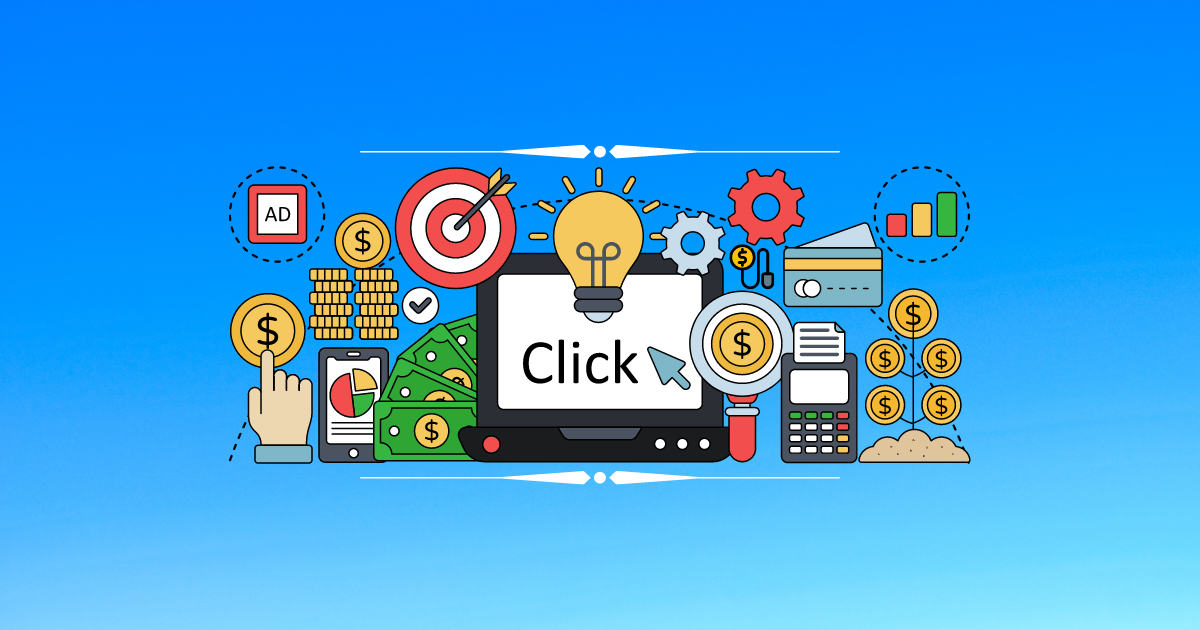
Pay-Per-Click (PPC) Advertising: What it is, How it Works, and Pros and Cons
Pay-per-click (PPC) advertising has become an essential part of many businesses’ online marketing strategies. In this article, we’ll explore what PPC is, how it works, and the benefits and drawbacks of using PPC advertising.
What is Pay-Per-Click (PPC)?
Pay-per-click (PPC) is an online advertising model in which advertisers pay a fee each time a user clicks on one of their ads. These ads typically appear at the top or bottom of search engine results pages (SERPs) or on social media platforms.
In a typical PPC campaign, advertisers bid on keywords that are relevant to their target audience. For example, a bakery may bid on keywords such as “birthday cake” or “cupcakes” to show their ads to users who are searching for those terms.
When a user types a search query into a search engine, the search engine uses a complex algorithm to determine which ads to display. The algorithm takes into account factors such as the relevance and quality of the ad, the bid amount, and the user’s search history.
If the user clicks on one of the ads, the advertiser is charged the amount they bid for that keyword. The cost per click (CPC) varies depending on several factors, including the competitiveness of the keyword and the industry.
How does PPC work?
PPC advertising requires a well-crafted ad and a clear landing page that delivers on the promise of the ad. The ad should be relevant, informative, and compelling enough to entice the user to click on it.
Once the user clicks on the ad, they are directed to a landing page that provides more information about the product or service being advertised. The landing page should be optimized for conversions, with a clear call-to-action that encourages the user to take a specific action, such as making a purchase or filling out a form.
To be successful with PPC advertising, it’s important to monitor campaigns carefully and adjust bids and targeting based on the performance of the ads. Advertisers can use tools such as Google Analytics to track metrics such as click-through rates (CTR), conversion rates, and return on ad spend (ROAS).
Benefits of PPC advertising
PPC advertising offers several benefits to businesses that want to reach their target audience quickly and effectively. Here are some of the key benefits of using PPC advertising:
- Immediate results: Unlike other forms of online marketing, such as SEO, PPC advertising can generate results quickly. Advertisers can set up a campaign and start receiving traffic and leads within a few hours.
- Targeted audience: PPC advertising allows businesses to target their ideal audience based on factors such as location, age, gender, interests, and search behavior. This makes it easier to reach the right people at the right time with the right message.
- Cost-effective: PPC advertising can be cost-effective because advertisers only pay when a user clicks on their ad. This means that businesses can control their ad spend and avoid wasting money on ineffective campaigns.
Drawbacks of PPC advertising
While PPC advertising offers many benefits, there are also some potential drawbacks to consider. Here are a few of the potential downsides of using PPC advertising:
- Competition: Some keywords can be highly competitive, which can drive up the cost per click and make it more difficult to achieve a high ad rank.
- Complexity: PPC advertising can be complex and time-consuming, requiring ongoing monitoring and optimization to ensure that campaigns are effective.
- Limited space: Ads in PPC campaigns are limited to a certain amount of space, which can make it challenging to convey all the necessary information in the ad itself.
Pay-per-click (PPC) advertising has become an essential component of online marketing strategies for many businesses. PPC allows advertisers to bid on keywords relevant to their target audience and pay a fee each time a user clicks on their ad. The benefits of PPC advertising include immediate results, a targeted audience, and cost-effectiveness, while potential drawbacks include competition, complexity, and limited space. To achieve success with PPC advertising, businesses should craft well-crafted ads, optimize their landing pages, and monitor campaigns carefully to adjust bids and targeting based on performance metrics.





